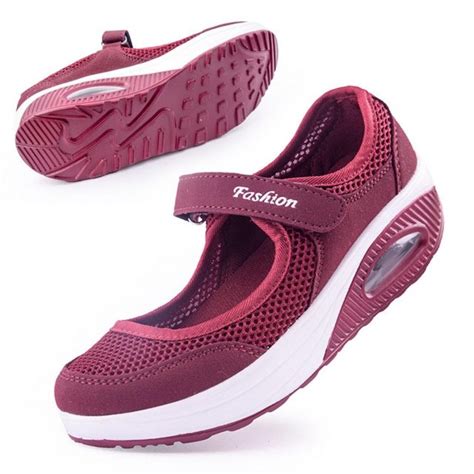Walking, a fundamental human activity, is often taken for granted until pain or discomfort strikes. Orthopedic walking shoes, designed specifically to provide support, cushioning, and stability, can transform the walking experience for individuals with foot conditions, injuries, or mobility challenges.

What are Orthopedic Walking Shoes?
Orthopedic walking shoes are scientifically designed to address specific foot problems and improve overall mobility. They typically feature:
- Enhanced arch support to reduce strain and provide stability
- Cushioning in the heel and forefoot for shock absorption
- Wider toe boxes to accommodate bunions or hammertoes
- Adjustable closures for customized fit
- Motion-control features to prevent overpronation or supination
Benefits of Orthopedic Walking Shoes
Investing in a pair of orthopedic walking shoes can provide numerous benefits, including:
- Reduced pain and discomfort in feet, ankles, knees, and back
- Improved posture and balance
- Enhanced stability and confidence while walking
- Reduced risk of falls
- Increased mobility and quality of life
Types of Orthopedic Walking Shoes
Orthopedic walking shoes come in a variety of styles and designs to accommodate different foot conditions and preferences. Some common types include:
- Motion-control shoes: Designed to prevent overpronation, where the foot rolls inward excessively
- Stability shoes: Provide moderate support for mild to moderate overpronation
- Neutral shoes: Offer a balance of support and flexibility for neutral feet
- Cushioning shoes: Emphasize cushioning for comfort and shock absorption
- Therapeutic shoes: Specifically designed for individuals with severe foot conditions, such as diabetes or arthritis
Who Should Wear Orthopedic Walking Shoes?
Orthopedic walking shoes are beneficial for individuals who experience:
- Foot pain, such as plantar fasciitis, metatarsalgia, or heel spurs
- Ankle pain and instability
- Overpronation or supination
- Bunions, hammertoes, or other foot deformities
- Arthritis, diabetes, or other conditions that affect foot mobility
Choosing the Right Orthopedic Walking Shoes
Finding the right pair of orthopedic walking shoes involves several key considerations:
- Foot type: Determine your foot type (neutral, overpronator, supinator) to choose shoes that provide appropriate support.
- Foot condition: Consider your specific foot condition and consult with a healthcare professional or shoe specialist for recommendations.
- Fit: Select shoes that fit snugly but allow for some movement.
- Comfort: Ensure the shoes feel comfortable from the moment you put them on.
- Style: Choose shoes that complement your lifestyle and personal taste.
Table 1: Common Foot Conditions and Orthopedic Walking Shoe Types
| Foot Condition | Orthopedic Walking Shoe Type |
|---|---|
| Plantar fasciitis | Cushioning shoes with arch support |
| Metatarsalgia | Shoes with a wide toe box and extra cushioning |
| Heel spurs | Motion-control shoes with a firm heel counter |
| Bunions | Shoes with a wide toe box and adjustable closures |
| Hammertoes | Shoes with a deep toe box and extra cushioning |
How to Care for Orthopedic Walking Shoes
To extend the lifespan and effectiveness of your orthopedic walking shoes:
- Clean regularly: Wash shoes by hand or use a gentle cycle in a washing machine.
- Air dry: Avoid heat sources like dryers to prevent damage.
- Replace insoles: Replace insoles as needed to maintain cushioning and support.
- Store properly: Keep shoes in a dry, well-ventilated area.
Table 2: Care Instructions for Orthopedic Walking Shoes
| Cleaning | Drying | Insole Replacement | Storage |
|---|---|---|---|
| Hand wash or gentle cycle in washing machine | Air dry at room temperature | Replace every 3-6 months | Dry, well-ventilated area |
Orthopedic Walking Shoes in the Future
The future of orthopedic walking shoes promises advancements in:
- Personalized design: 3D printing technology allows for custom-designed shoes that precisely fit individual feet.
- Smart features: Shoes with sensors can track steps, calories burned, and other metrics, providing valuable insights for fitness and health.
- Novel materials: Graphene-infused soles offer exceptional cushioning and durability, enhancing comfort and performance.
Table 3: Expected Advancements in Orthopedic Walking Shoes
| Advancements | Benefits |
|---|---|
| Personalized design | Optimal fit and support |
| Smart features | Fitness and health tracking |
| Novel materials | Enhanced cushioning and durability |
Table 4: Questions to Ask When Buying Orthopedic Walking Shoes
| Question | Importance |
|---|---|
| What type of foot pain or condition do you experience? | Helps determine the appropriate shoe type |
| Do you overpronate or supinate? | Ensures proper foot support |
| What activities do you plan to wear the shoes for? | Determines the level of cushioning and stability needed |
| What style and color do you prefer? | Enhances the wearing experience |
| How much can you spend? | Sets a budget and narrows down options |
Conclusion
Orthopedic walking shoes are a valuable investment for individuals seeking pain relief, improved mobility, and overall well-being. By choosing the right shoes for your specific needs and following proper care instructions, you can enjoy the benefits of comfortable and supportive footwear for years to come. Embrace the step-by-step approach and invest in a pair of orthopedic walking shoes that will transform your walking experience. Remember, the ultimate goal is to empower you with the freedom to live an active and fulfilling life, one step at a time.
